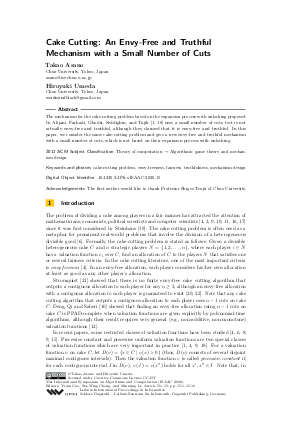LIPIcs.ISAAC.2020.15.pdf
- Filesize: 0.55 MB
- 16 pages

 Creative Commons Attribution 3.0 Unported license
Creative Commons Attribution 3.0 Unported license























Feedback for Dagstuhl Publishing